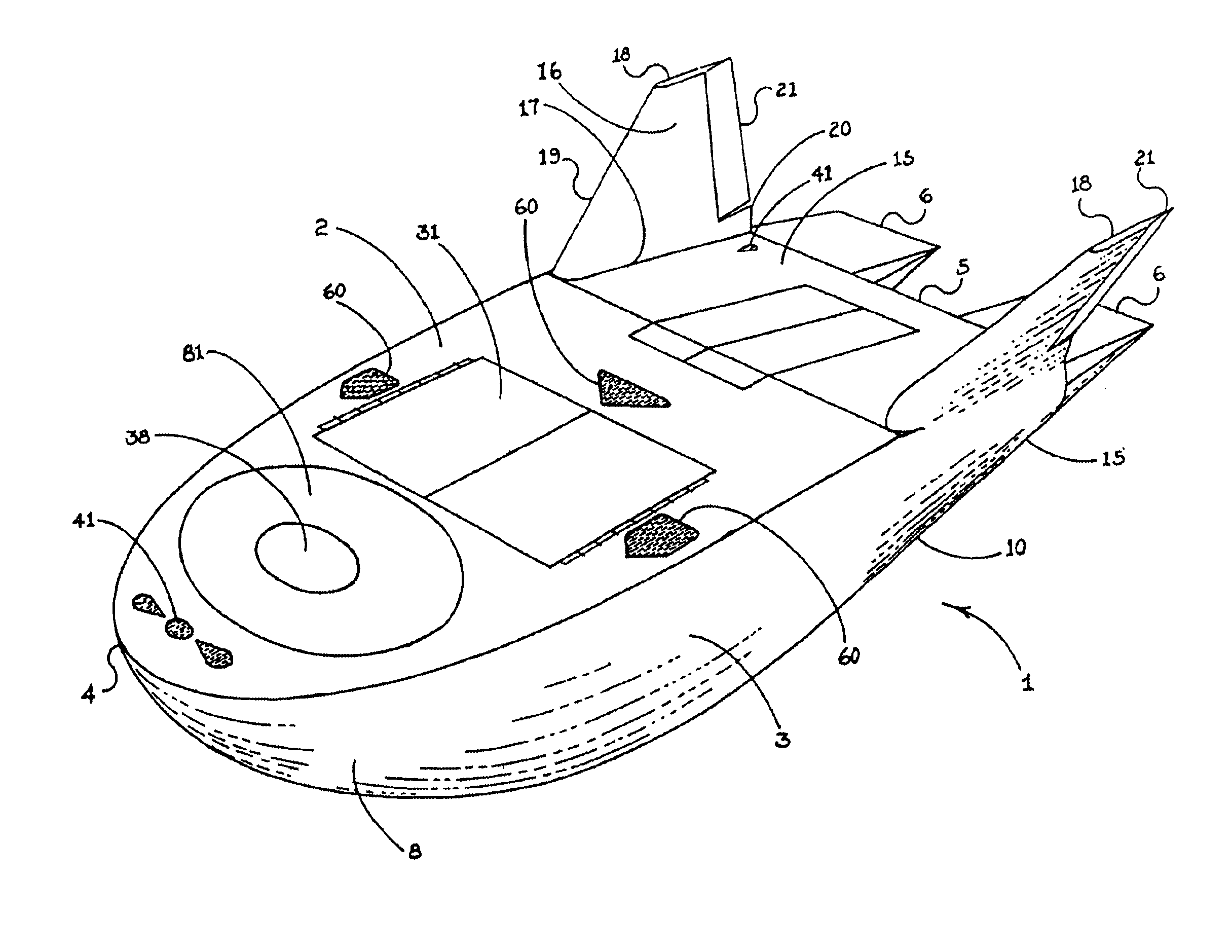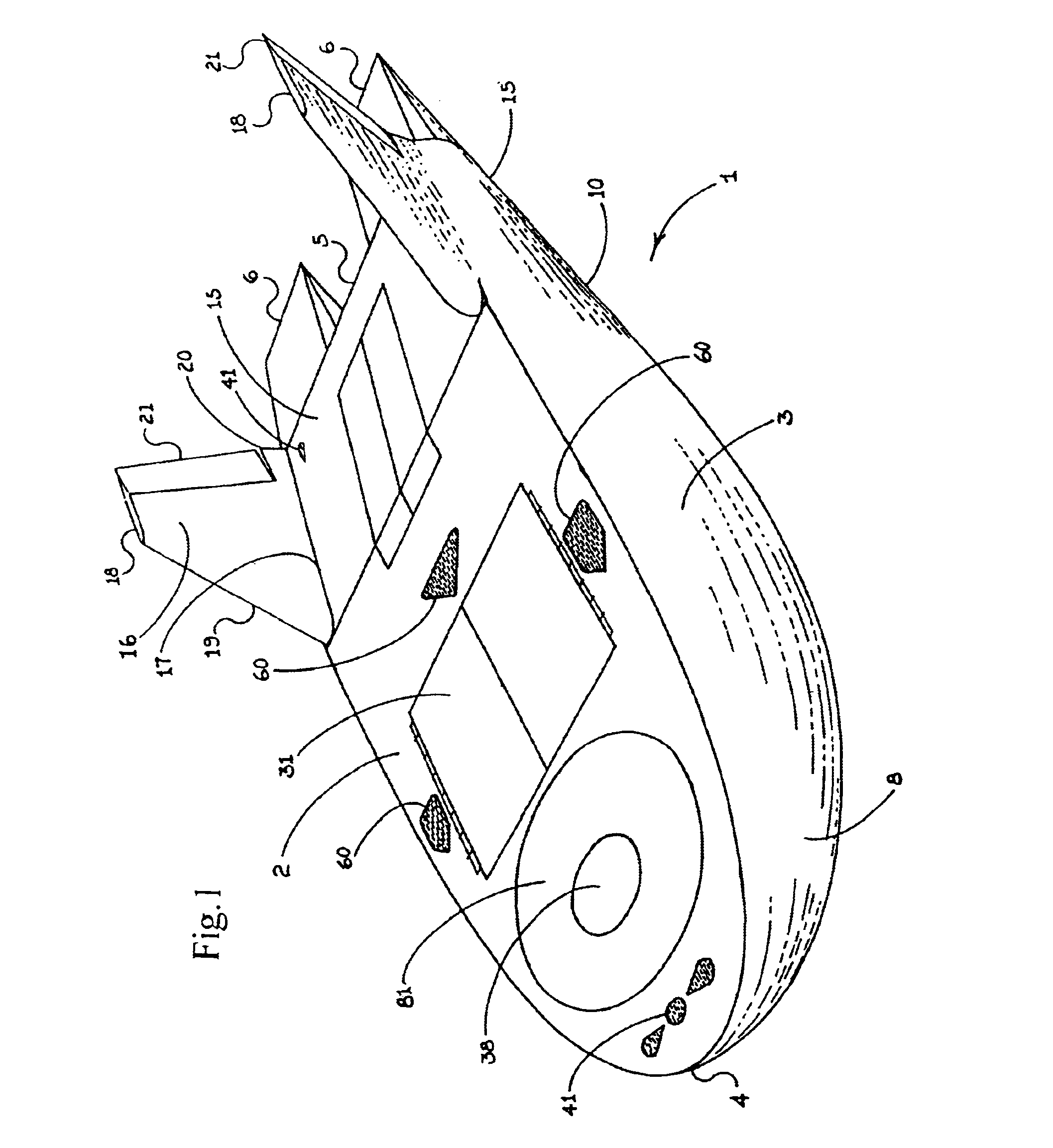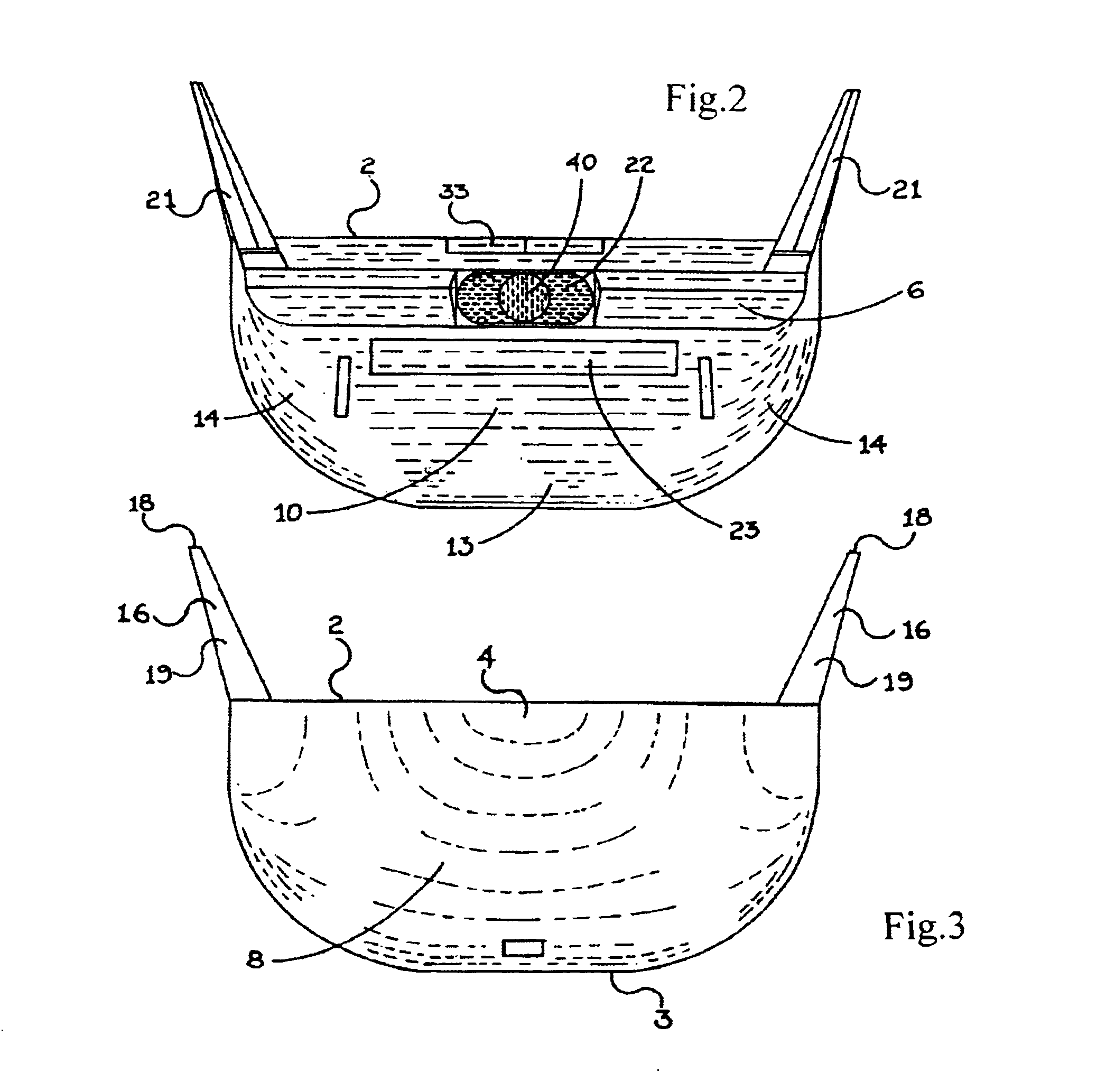Lifting body aircraft and reentry vehicle
- Summary
- Abstract
- Description
- Claims
- Application Information
AI Technical Summary
Benefits of technology
Problems solved by technology
Method used
Image
Examples
Embodiment Construction
[0040]The invention comprises a lifting body aircraft 1 having an upper surface 2 and a lower surface 3. Upper surface 2 extends from the nose 4 to the tail 5 of craft 1. The length of craft 1 is that dimension extending from nose 4 to tail 5, excluding any elevons 6 (discussed below) which may be provided at the tail end or aft end 7 of craft 1.
[0041]Lower surface 3 has a first half 8 extending from nose 4 to about the longitudinal center line 9 of craft 1. The longitudinal center line 9 of craft 1 is determined by a plane severing craft 1 perpendicular to the length of craft 1 at the half way point between nose 4 and tail 5. Lower surface 3 also has a second half 10 extending from about longitudinal center line 9 to tail 5.
[0042]Upper surface 2 has a pair of edges 11 that extend from nose 4 to tail 5 such that nose 4, edges 11, and tail 5 demark upper surface 2. Edges 11 also demark two boundaries between upper surface 2 and lower surface 3. Edges 11 preferably run from nose 4 to ...
PUM
 Login to View More
Login to View More Abstract
Description
Claims
Application Information
 Login to View More
Login to View More - R&D
- Intellectual Property
- Life Sciences
- Materials
- Tech Scout
- Unparalleled Data Quality
- Higher Quality Content
- 60% Fewer Hallucinations
Browse by: Latest US Patents, China's latest patents, Technical Efficacy Thesaurus, Application Domain, Technology Topic, Popular Technical Reports.
© 2025 PatSnap. All rights reserved.Legal|Privacy policy|Modern Slavery Act Transparency Statement|Sitemap|About US| Contact US: help@patsnap.com



